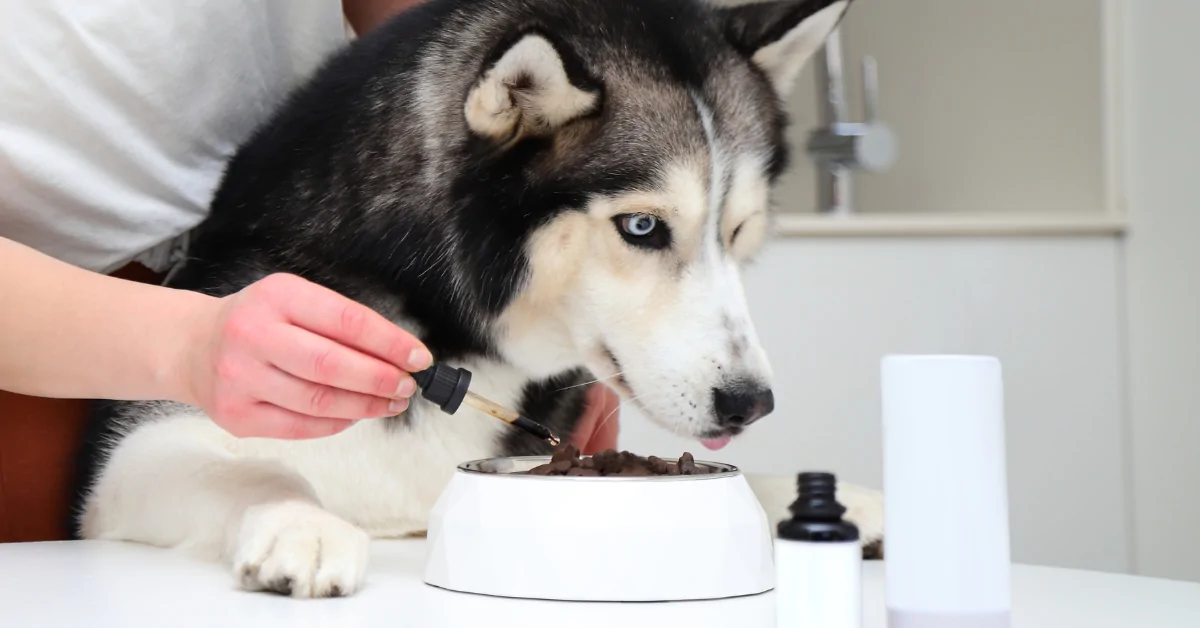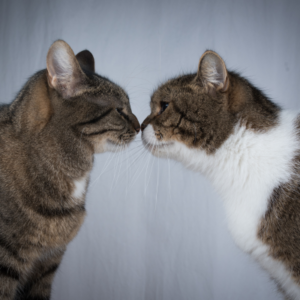
Two cats staring off
Cats, with their enigmatic eyes and mysterious behaviors, have captivated human hearts for centuries. But what secrets lie behind those intense, often inscrutable gazes?
While we might be tempted to attribute human emotions to our feline friends, the truth is more intricate and fascinating. Each stare, blink, and subtle shift in posture is a language, revealing insights into their emotions, instincts, and health.
As we unravel the science and art of feline communication, you’ll find that these silent dialogues can transform the way you connect with your cat.
Facts about cats staring
- A cat’s intense gaze can range from expressing deep affection through slow blinks to signaling hunger or curiosity
- Subtle cues like tail flicks, ear orientations, and whisker movements enhance the depth of feline communication beyond just staring
- Persistent or altered staring patterns, especially with other behavioral shifts, may be early indicators of distress or health complications
Why do cats stare?

A stare is a casual cat conversation
Cats, unlike us, don’t have the luxury of words. Instead, they’ve mastered the art of non-verbal communication, using their eyes as a primary tool. When your feline friend fixes their gaze upon you, it’s not just a casual glance; it’s a conversation. They might be seeking your attention, asking for a play session, or simply expressing their contentment in your company.
The intensity, duration, and accompanying body language can provide clues about what they’re trying to convey. For instance, a prolonged stare with slow blinking is often a sign of trust and affection. On the other hand, a sharp, focused stare could be a plea for you to notice something. Perhaps it’s their empty food bowl or a toy just out of reach.
By tuning into these silent dialogues, we can better understand and respond to our cat’s needs and emotions.
Hunting Instinct
Deep within every domesticated feline lies the heart of a wild predator. This ancestral trait is demonstrated by the way cats observe their surroundings, especially when they lock their gaze onto something. Their intense stare is a throwback to their wild ancestors who relied on keen observation skills to hunt prey. When your cat stares intently, they’re channeling this age-old hunting instinct. This is true even if the “prey” is just a toy mouse or a fluttering curtain. Their pupils might dilate, and their body may go still, ready to pounce. This behavior is not just about food; it’s an ingrained survival mechanism. While our modern-day house cats may not need to hunt for their dinner, this instinctual behavior is a testament to their evolutionary history.
Affection
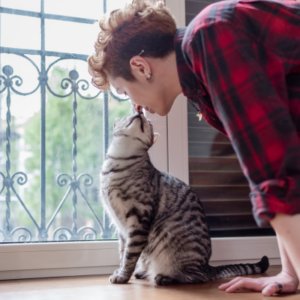
Cat showing affection
Cats have a unique and subtle way of expressing their affection, and it often lies in the gentle gaze they cast upon us. When your cat stares at you and slowly blinks, it’s akin to a human smile, a silent “I love you.” This slow blink, often referred to as “cat kisses,” is a sign of trust and contentment. Your purr-fect,furball companion is letting you know they feel safe and treasured in your presence. Additionally, when they maintain soft eye contact while purring or kneading, it’s their way of reinforcing their bond with you. While cats might have a reputation for being aloof, these tender moments of connection reveal their deep capacity for love and attachment. Recognizing and reciprocating these gestures can strengthen the bond you share, creating a mutual language of love and understanding.
Curiosity
Ever noticed your cat’s unwavering gaze as you go about your daily tasks? That’s their innate curiosity at play. Cats are natural observers, always keen to understand the world around them. Whether it’s watching a bird outside the window, tracking your movements as you cook, or studying a new object in the house, their stare is a quest for knowledge. You, their beloved human, are a primary source of entertainment and intrigue. Every action you take is a potential learning opportunity for them. This curiosity isn’t just about amusement; it’s a survival trait. In the wild, being observant meant staying safe from predators and successfully hunting prey. In our homes, it translates to understanding their environment and bonding with their human family. So, the next time your cat seems engrossed in your activities, know that they’re just trying to figure out the fascinating world of humans.
Territorial Behavior

Showing who’s in charge
Every cat owner knows that, in the eyes of their feline friend, the house is truly the cat’s domain. Your cat believes that they OWN the house! This territorial nature is deeply rooted in their instincts. When your cat stares intently, especially at other animals or at certain spots in your home, they’re often marking their territory. This isn’t always about dominance; it’s about creating a sense of security. Their unwavering gaze serves as a silent warning to others: “This is my space.” Accompanied by other behaviors like scent marking or rubbing their face against objects, the stare helps establish boundaries. Even in multi-cat households, you might notice certain spots where one cat tends to linger and stare. This signals to the other cats that it’s their claimed area. Understanding this behavior is crucial for ensuring harmony in homes with multiple pets. And along with this is the recognition of the importance of giving each cat their own “territory” to feel safe and secure.
Hunger
If you’ve ever felt the unwavering gaze of your cat around mealtime, you’re not alone. One of the most common reasons for a cat’s intense stare is simply… hunger. Those big, imploring eyes are their way of saying, “It’s time to feed me!” Especially if they’re positioned near their food bowl or watching you in the kitchen, their stare is a clear indication of their desire for sustenance. But it’s not just about the food. This behavior showcases their reliance on us for their basic needs. While they might not meow or paw at you, their eyes do the talking. It’s a gentle reminder of the bond of trust and dependency that they share with us. So, the next time your feline friend fixes their gaze on you, especially around their feeding schedule, it might just be their way of hinting that their tummy is purr…we mean.. Rumbling.
Fear or Stress
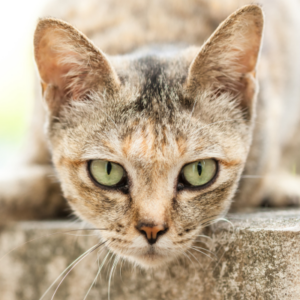
Curious cat showing concern
Cats, with their poised demeanor, can sometimes mask their emotions. However, their eyes often betray what they’re truly feeling. A sharp, intense stare accompanied by dilated pupils can be a clear sign of fear or stress. This isn’t just a random reaction; it’s a primal response to perceived threats. Whether it’s a sudden loud noise, the presence of a stranger, or a change in their environment, such reactions are their way of staying alert and prepared. The wide-eyed stare increases their field of vision, helping them assess the situation better. It’s essential for cat owners to recognize these signs and provide a safe space for their feline companions. A gentle approach, soothing voice, or even just giving them some alone time can help alleviate their stress.
Illness
Cats are masters of disguise when it comes to hiding their discomfort or pain. However, subtle changes in their behavior, including the way they stare, can sometimes be indicative of underlying health issues. A cat that suddenly stares more frequently or intensely, especially if it’s coupled with other unusual behaviors, might be trying to communicate that something’s amiss. It could be a sign of discomfort, pain, or confusion. For instance, a cat with deteriorating vision might stare longer as they try to make sense of their blurry surroundings. Similarly, a cat experiencing internal discomfort might fixate on a particular spot or object, trying to process the unfamiliar sensation. It’s crucial for cat owners to be observant and proactive. If you notice any sudden or prolonged changes in your cat’s staring behavior, it’s always a good idea to consult with a veterinarian to rule out potential health concerns.
How to tell what a cat’s stare means
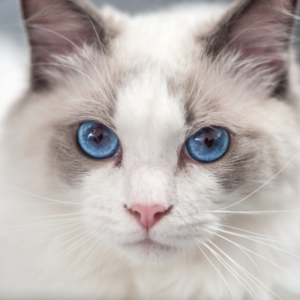
Whiskers can decode what your cat is thinking
While a cat’s stare can speak volumes, it’s just one piece of the intricate puzzle of feline communication. To truly understand what your cat is trying to convey, it’s essential to consider their entire body language. Cats use a symphony of signals, from the tip of their tail to the twitch of their whiskers, to express their emotions and intentions.
Look at the tail
The tail is a primary communication tool for cats. A raised tail indicates confidence and contentment, while a tucked tail can signify fear or submission. If your cat’s tail is flicking or lashing, it’s a sign of irritation or agitation. And when it’s puffed up? That’s your cat’s way of trying to appear larger, usually in response to a perceived threat.
Check the ears
A cat’s ears are like radar dishes, constantly tuning into their environment. Forward-facing ears show interest or curiosity. But if those ears are flattened against their head, it’s a clear sign of fear, aggression, or annoyance.
Watch the whiskers
Whiskers are more than just facial hair for cats; they’re sensitive touch receptors. Forward-facing whiskers indicate curiosity or excitement, while whiskers that are pulled back signal fear or aggression.
Listen closely
While purring is often associated with contentment, it can also be a sign of distress or discomfort. It’s essential to consider the context in which the purring occurs. Other vocalizations, like meowing, chirping, or hissing, can provide further insights into your cat’s emotional state.
Evaluate their posture
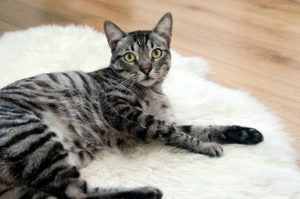
Sprawled out means your cat feels safe
A relaxed cat might sprawl out or curl up, showing they feel safe and secure. In contrast, a cat that’s crouched low with a tense body is on high alert. And if they’re showing their belly? It’s the sign of ultimate trust, but be cautious – not all cats like belly rubs!
By paying attention to these subtle cues and understanding the science behind them, you can decode your cat’s emotions and intentions more accurately. This knowledge not only deepens the bond you share with your feline friend but ensures their well-being and happiness.
Common Questions About Cats Staring
Cats, with their enigmatic behaviors and captivating stares, often leave us with a myriad of questions. Delving into these common concerns can help cat owners better understand and connect with their feline companions.
Is My Cat Plotting Against Me?
You WISH your cat thought that highly of you to plot against you. While internet memes might jest about cats plotting world domination, the reality is far more endearing. Cats are naturally curious and observant creatures. Their intense stares and sneaky behaviors are often just expressions of their playful nature or their way of seeking attention. Rest assured, your cat isn’t plotting; they’re probably just contemplating their next playful move or nap spot.
Why Does My Cat Stare at Me While I Sleep?
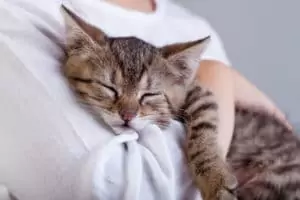
Sleepy cat feeling safe, just like they want you to feel when you sleep
It can be a tad unsettling to wake up to your cat’s intense gaze in the middle of the night. However, this behavior is rooted in their instincts. Cats are crepuscular, meaning they’re most active during dawn and dusk. While you’re in deep slumber, your cat is wide awake and naturally curious about your peaceful state. Moreover, they might just be guarding you, ensuring you’re safe as you rest.
How to Respond to Your Cat’s Stare?
Understanding the meaning behind your cat’s stare is the first step. If it’s a sign of affection, like the slow blink, you can reciprocate with a slow blink of your own. If they’re showing signs of stress or fear, giving them space and a calm environment can help. And if it’s curiosity or playfulness, engaging them in a play session can be a great way to bond.
When your cat’s stare should be cause for concern
While many of a cat’s stares are rooted in curiosity, affection, or instinct, there are times when their gaze might indicate something more serious. Being attuned to these subtle changes can be crucial for ensuring the well-being of your feline friend.
Sudden Changes in Behavior:
Consistency is key when it comes to feline behavior. If your usually aloof cat suddenly becomes clingy or vice versa, it’s worth noting. A sudden increase in the intensity or frequency of their stare, especially if accompanied by other behavioral changes, might be a sign of distress or discomfort.
Staring at a Specific Spot:
If your cat fixates on a particular spot on their body or in their environment, it could indicate pain or discomfort. For instance, a cat that constantly stares and licks a specific area might be dealing with an injury or skin issue.
Unusual Pupil Dilation:
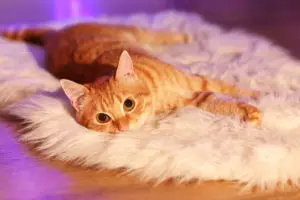
Cat with dilated pupils can be a sign of fear
While cats’ pupils naturally dilate in low light, sudden and unexplained changes in pupil size can be concerning. Dilated pupils can indicate fear, excitement, or pain, while constricted pupils might signal an issue with their central nervous system.
Avoidance or Aggression:
If your cat suddenly avoids eye contact or becomes aggressive when you try to engage them, it could be a sign of pain or illness. Cats often hide their discomfort, so any change in their interaction patterns should be taken seriously.
In any of these scenarios, it’s essential to consult with a veterinarian. They can provide insights into any potential health issues and guide you on the best course of action.
As we journey through the world of feline stares and behaviors, it’s evident that our cats communicate in ways more profound than we often realize. Each gaze, blink, and twitch is a testament to their complex emotions, instincts, and health. By understanding these silent dialogues, we not only strengthen our bond with our feline friends but also ensure their well-being. Your cat’s eyes hold stories waiting to be understood; let’s discover them together.
At Banixx, our commitment is to help you nurture this beautiful relationship with your feline. We invite you to visit our blog regularly. We continuously explore the intricacies of cat behavior, offering insights and tips to keep your beloved companion both happy and healthy.
If, on the other hand, you’re dealing with cat hot spots and want to know how to treat cat hot spots or take of your cat’s ear infection, we have that information for you. Or, are you interested in more quirky items? such as why does my cat get hairballs, or, why does Catnip have such a hilarious effect on your cat? we’ve got those too!
Sources
https://www.petmd.com/news/view/why-does-my-cat-stare-me-38021
https://thevets.com/blog/why-does-my-cat-stare-at-me/
https://www.thesprucepets.com/why-cats-stare-at-you-5218919
https://cats.com/why-is-my-cat-staring-at-me
https://www.pumpkin.care/blog/why-does-my-cat-stare-at-me/
https://www.brookfarmveterinarycenter.com/post/why-does-my-cat-always-stare-at-me-understanding-creepy-cat-behavior
https://www.pawtracks.com/cats/why-do-cats-stare/
https://www.thedodo.com/dodowell/why-does-my-cat-stare-at-me
Share this Post
Featured Post
Recent Posts
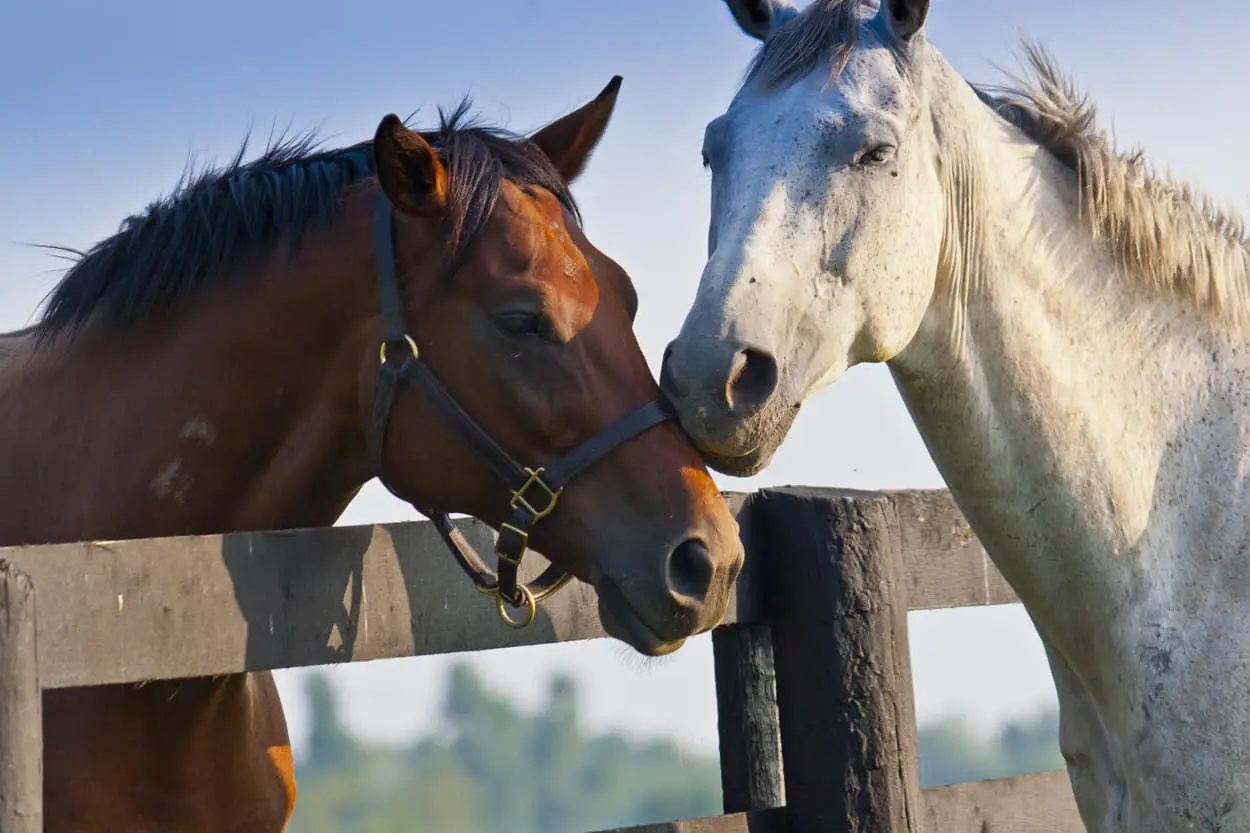
Do horse coat colors affect their behavior?
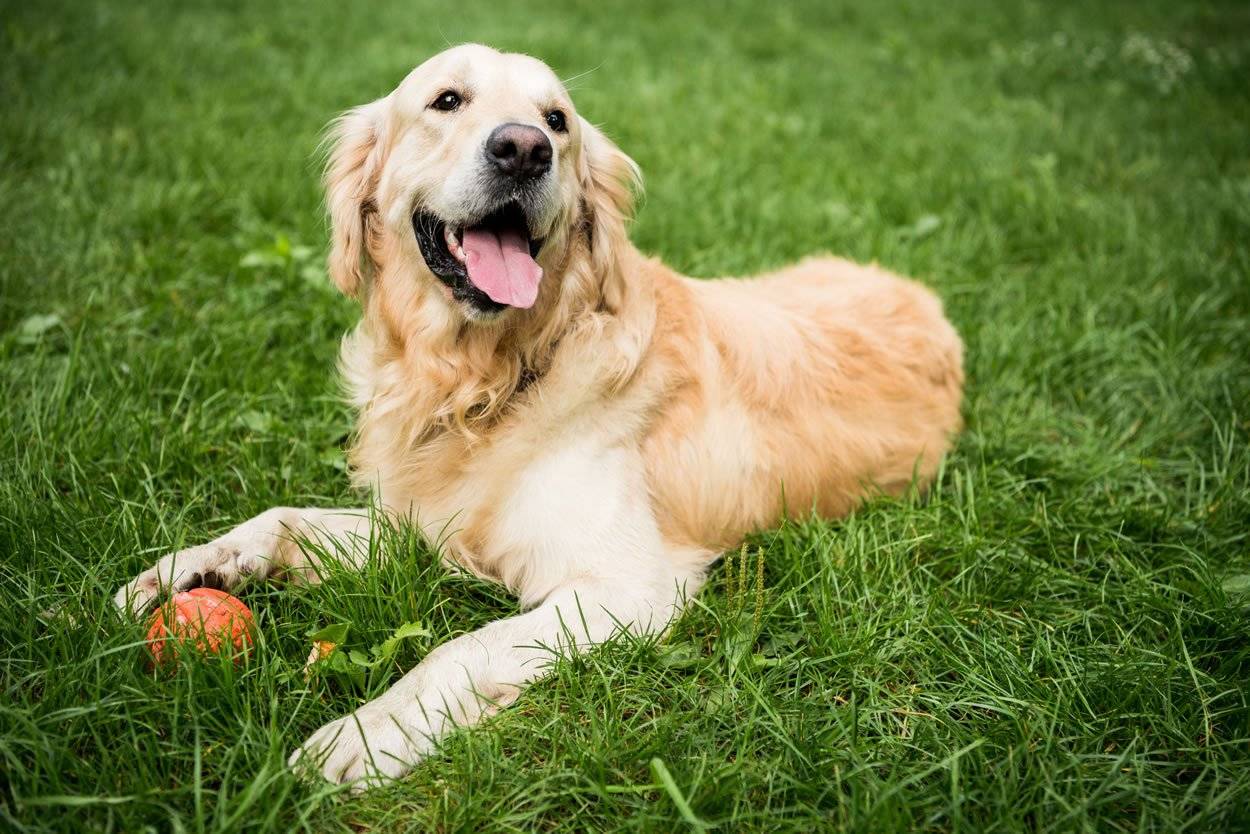
Lipomas….mysterious Lumps & Bumps on your pup…When should I worry? What should I do about them?
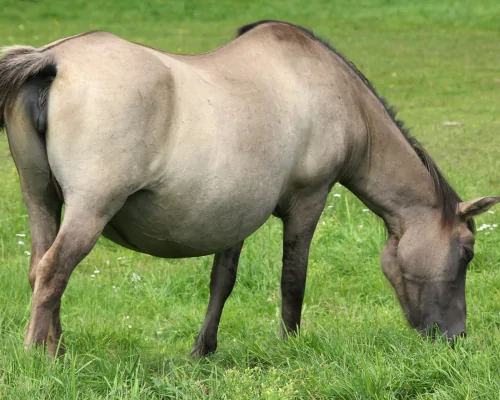
Managing the Mamas –Part 2 –The Foal development process
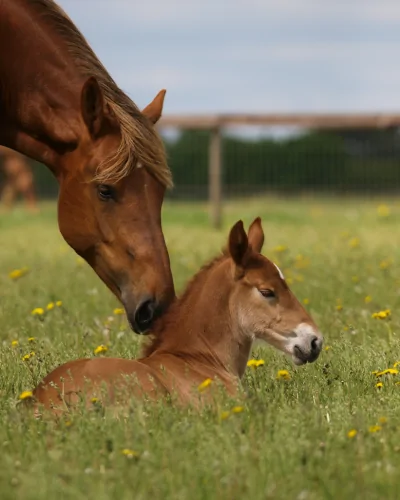
Managing the Mamas: Part 1 – Preparing to Breed Your Mare

HOW MANY TOES?? Caring for the Polydactyl Cat
